Types Of Tile Backer Board: Fibre Cement Board vs XPS Tile Backer Board
17/06/2024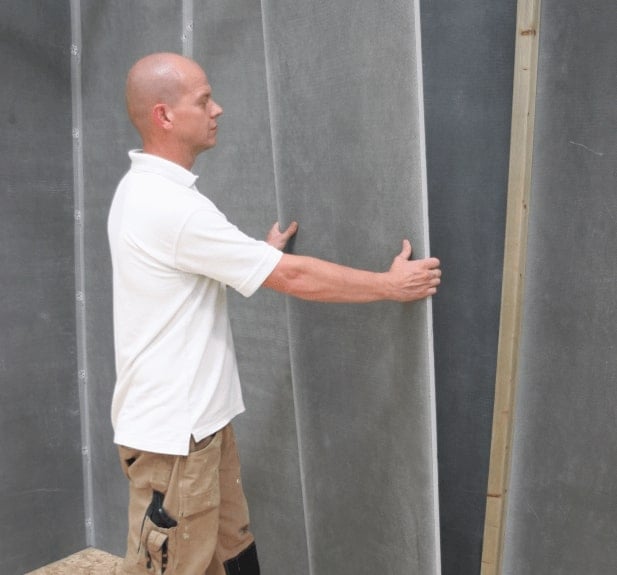
At Pro Tiler Tools, we offer a wide range of high-quality tile backer boards and accessories to make your tiling projects a success. Our range includes industry-leading brands and widely used backer boards for tile, with ever-popular names such as HardieBacker Board, Premtool Tile Backer Board, Jackoboard, Schluter Kerdi Board, Marmox Board, Warmup Insulation Board and Wedi Board.
What Are Tile Backer Boards?
Essentially, tile backer boards are panels or sheets made from materials like cement, extruded polystyrene (XPS), or fibre cement, designed to provide a stable and supportive surface for tile installation. They serve as a substrate onto which tiles are adhered, offering protection against water, moisture, mould, and other potential damages.
Read More:Types Of Tile Backer Board: Fibre Cement Board vs XPS Tile Backer Board
| Fibre Cement Board (e.g. Cembloc DryBloc, Hardie backer board, No More Ply Construction board, Knauf Aquapanel Cement Board and No More Ply Floorboard) | XPS Tile Backer Board (e.g. Wedi Board, Kerdi-Board, Premtool Board, Jackoboard and Marmox Board) |
|---|---|
Why Use Fibre Cement Board? |
What Are XPS Tile Backer Boards? |
|
Fibre cement boards are a reliable, versatile, and low-maintenance option for a wide range of construction projects, offering significant benefits in terms of durability, longevity and ease of use. Here are some important benefits of fibre cement board:
|
XPS insulation boards, also known as XPS foam boards or simply XPS boards are designed to provide excellent thermal insulation, moisture resistance, and durability, making them ideal for various applications. A key benefit is also that they are waterproof. XPS insulation boards are constructed from extruded polystyrene foam, which is known for its high compressive strength and low thermal conductivity. This combination of properties makes XPS boards highly efficient in reducing heat transfer and improving energy efficiency in buildings. Whether you're insulating walls, floors, or roofs, XPS insulation boards offer a reliable solution. Our selection of XPS foam boards includes various thicknesses and sizes to accommodate different project requirements. These boards are also easy to handle and cut, allowing for precise fitting and installation. |
Do I Need To Prime Tile Backer Board?
Priming a tile backer board is generally not necessary, but it depends on the type of backer board and the specific requirements of the tile installation. Here are some guidelines for different types of tile backer boards:
-
Fibre Cement Board (Cembloc DryBloc, Knauf Aquapanel Cement Board and No More Ply Floorboard):
- Priming is usually not required, just ensure the surface is clean and free of dust.
- Follow manufacturer instructions, as some brands may recommend specific surface preparation steps.
- It is worth noting that we stock the No More Ply PrePrimed Backer Board, eliminating the need to prime before use. PrePrimed NoMorePly is also water-resistant, unlike plywood which weakens when damp. Plus, it’s also A1 fire-rated for your peace of mind.
-
XPS Tile Backer Board (e.g. Wedi Board, Kerdi-Board, Premtool Board, Jackoboard and Marmox Board):
- XPS backer boards generally do not require priming. They are designed to be waterproof and ready for tile installation.
- Make sure to seal all joints and edges properly to maintain waterproof integrity. Explore our waterproofing and tanking solutions for your tiling projects.
-
Hardie Backer Board:
- As with fibre cement board, priming HardieBacker board (a type of cement backer board) is not typically required before tiling, as it is designed to be directly tiled over without the need for a primer. The board is designed to provide a strong, durable surface that tiles can be directly adhered to with HardieFoam Adhesive.
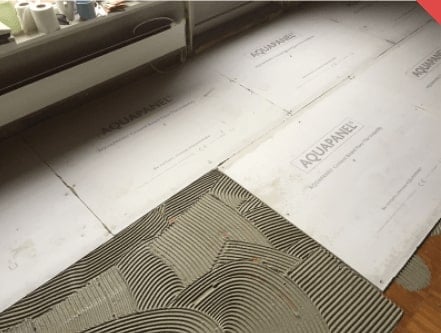
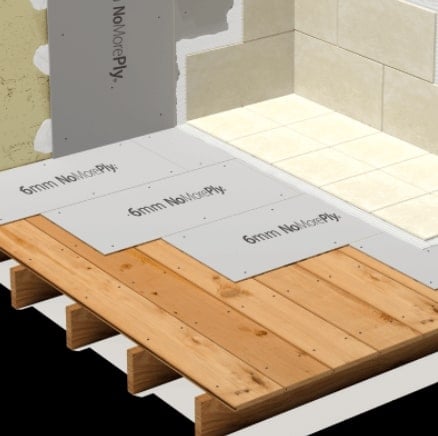
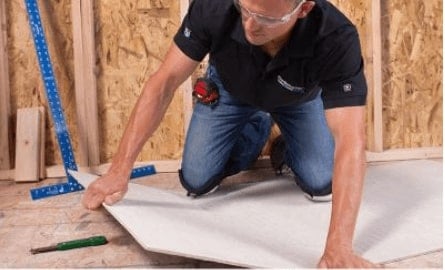
When to Consider Priming Tile Backer Board
- Self-Leveling Underlayment: If you’re applying a self-levelling compound over the backer board before tiling, priming might be necessary to ensure proper adhesion of the underlayment. Use a tile primer recommended by the self-levelling compound manufacturer.
- Adhesion Issues: In cases where there are concerns about the adhesive adhering properly to the backer board, a bonding primer might be recommended. Always check the adhesive manufacturer’s instructions.
- Special Coatings: If the backer board has been painted or treated with a coating that could interfere with adhesion, a primer designed for use over such surfaces might be necessary.
Fixing Tile Backer Boards: How To Fix Fibre Cement Board
Here are five installation steps for fixing fibre cement board (it’s worth noting that all brands of fibre cement board are different, so always check your board datasheet):
-
Preparation:
- Wear personal protective equipment (PPE) for debris and dust protection.
- Measure the area where the board will be installed.
- Mark the cutting line on the board using a pencil or chalk line.
- You may also consider a primer, such as Cembloc Cembond.
-
Scoring or Cutting:
- Cut the board along the marked line. The No More Ply Backer Board Scoring Knife or Score & Snap Knife For HardieBacker Board are a couple of great options.
- You could also smooth any rough edges with a utility knife.
-
Positioning:
- Position the board on the wall, starting at one corner. Use a spirit level to ensure it is straight.
- Leave a small gap (usually around 1/8 inch) between the board and any adjoining surfaces to allow for expansion.
-
Fastening:
- Drill pilot holes into the board where the fasteners will go.
- Use corrosion-resistant nails or screws to secure the board to the studs or sheathing. We offer a selection of accessories and extras such as Backer Board Screws and Backer Board Washers, to help make your installation process easier. Some of our fixing suggestions include Cembloc FCB Fibre Cement Screws or No More Ply Fibre Cement Board Screws.
- Space fasteners according to the manufacturer's recommendations.
- Alternatively, you could use a backer board adhesive, such as the No More Ply Mega Strength Adhesive or Cembloc CemBond-Max Strength Adhesive.
-
Sealing and Painting:
- Fibre cement board can be used internally and externally, for external cladding/rendering, internal floors, walls and ceilings. So it’s worth noting that you can apply exterior-grade caulk to all seams and gaps, allow the caulk to dry, and then paint the board with exterior paint if needed.
Fixing Tile Backer Boards: How To Fix XPS Tile Backer Boards
Fixing XPS tile backer boards involves several steps to ensure they are properly installed and provide a stable, waterproof surface for tiling, as with fibre cement boards, it’s worth noting that all brands of XPS board are different, so always check your board datasheet. Here’s a step-by-step guide:
-
Measure and Cut the Boards
- Wear personal protective equipment (PPE) for debris and dust protection.
- Measure the area where the board will be installed to determine the size and number of boards needed.
- Use a utility knife to cut the XPS boards to the required size. Ensure the cuts are straight for a proper fit.
-
Prepare & Clean the Surface
- Make sure the surface where the boards will be installed is clean, dry, and free of debris.
- Dry Fit the Boards: Place the cut boards on the surface to ensure they fit properly. Adjust as necessary.
-
Apply Adhesive
- Mix and apply the adhesive: Using a notched trowel, spread a layer of thin-set mortar on the surface where the board will be installed. Ensure even coverage for a strong bond.
-
Fix the Boards
- Place the XPS backer boards onto the adhesive, pressing them firmly to ensure good adhesion. Then, use screws or fasteners recommended by the board manufacturer to further secure the boards. We offer a selection of accessories and extras such as Backer Board Screws and Backer Board Washers, to help make your installation process easier. Remember to use a spirit level to ensure the boards are flat and even.
-
Seal Joints & Waterproof
- Place mesh tape over all the joints and seams between the boards. Apply a thin layer of adhesive over the mesh tape, smoothing it out to ensure there are no gaps or air bubbles. Finally, apply waterproofing tape over the seams and corners. Ensure it adheres well and covers all joints.
Backer Boards For Floors
By using backer boards, you can significantly enhance the performance and durability of your flooring, making them an essential component for any floor tiling project.
Here are some key considerations:
- Subfloor Type: Ensure the subfloor is suitable for the type of tile backer board being used.
- Load-Bearing Capacity: Check that the subfloor can support the additional weight of the backer board and tiles.
- Manufacturer's Guidelines: Always follow the manufacturer's instructions for installation to ensure proper performance and warranty coverage. These are always listed in the data sheet on our product pages.
Which Type of Tile Backer Board Should You Use?
Tile backer boards should be used in any room where you plan to install tile or stone flooring and where moisture, heavy use, or the need for a stable surface are factors. By choosing the appropriate type of backer board for each specific area, you can ensure the longevity and performance of your tile installations. Here are the key rooms where backer boards are most beneficial, and suggestions on which type of tile backer board to use:
| Bathroom | Kitchen | Utility Room | Showers & Wetrooms |
|---|---|---|---|
| Bathrooms are prone to high moisture levels from showers, baths, and sinks. The use of backer boards helps to prevent water damage to underlying structures. | Kitchens experience frequent spills and high humidity from cooking activities. Backer boards provide a stable surface for tiling backsplashes, countertops, and floors. | Laundry rooms often deal with water from washing machines and utility sinks, making moisture resistance crucial. | Direct and constant exposure to water in showers and wet rooms necessitates a waterproof and stable surface. |
|
Recommended Backer Boards: Cement, fibre cement, and XPS backer boards are ideal due to their moisture resistance. |
Recommended Backer Boards: Cement backer boards and fibre cement boards are well-suited for kitchen environments. |
Recommended Backer Boards: Cement backer boards like Hardie Backer board and fibre cement board are good choices for laundry rooms. |
Recommended Backer Boards: Opt for a cement backer board or XPS tile backer boards like Wedi Board or Kerdi-Board - due to its waterproof membrane. |
In terms of affordability, a more budget option for any of these rooms would be Premtool tile backer board. In terms of more mid-low range budgets, Jackoboard, Marmox tile backer board and Kerakoll VipaBoard are great options. For mid to higher range budgets, Wedi Board and Warmup insulation boards are our recommended go-tos. Finally, Schluter KERDI-BOARD is a more premium option.
Choosing Between Cembloc DryBloc and No More Ply Floorboard
In some instances, instead of a tile backer board, you can install a similar product directly to the joists. To shine the spotlight on two great products to do so, here are the key features and benefits of both Cembloc DryBloc and No More Ply Floorboard:
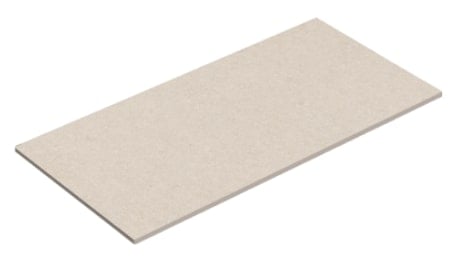
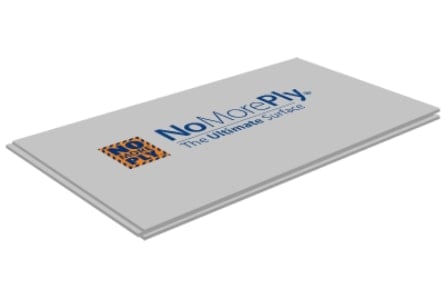
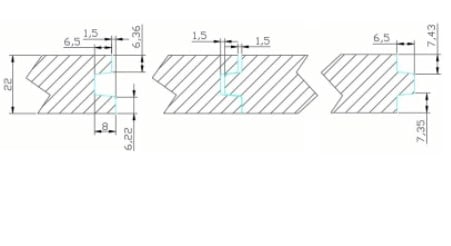
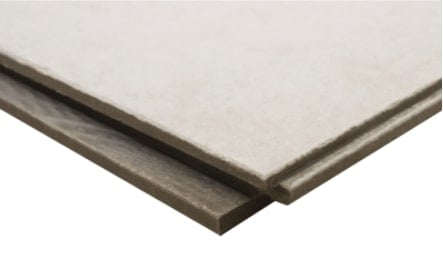
| Cembloc DryBloc | No More Ply Floorboard |
|---|---|
| Reinforced Cement Fibre Board. | Squeak-Free Flooring. |
| Dry-Fit Screed Replacement & Wet screed replacement. | An ideal non-combustible barrier in commercial environments. |
| Suited to both a timber joist and steel joisted floor, as well as being suitable for beam and block constructions. | A popular choice for mezzanine floors and for use in the construction of modular buildings. |
| Outstanding Thermal Conductivity. Can be used in conjunction with routed insulation for underfloor heating applications. | Compatible With Underfloor Heating. |
| Provides fireproof (A1 Fire Rated), acoustic (Excellent airborne sound performance), and waterproof protection, with very high dimensional stability. | Water-Resistant. |
| Tongue And Groove To All 4 Sides. | Tongue And Groove To All 4 Sides. |
| Can be used for balconies and other external floor substrates, such as outdoor tiled areas. | |
| They can be used as a substrate to engineered timber flooring and finished with carpets and linoleum. |
- Transform Your Tiling Projects With Premtool Tile Backer Boards
- Cement Boards: Knauf AQUAPANEL Spotlight
Overall, tile backer boards are essential if you want a guarantee that you are creating a durable, moisture-resistant foundation for tile installations in wet and high-moisture environments. We understand the importance of achieving a high-quality finish with your tiling projects, so should you need any tiling advice or support with your order, don’t hesitate to contact us via email at [email protected] or give us a call at 01604 859800.

